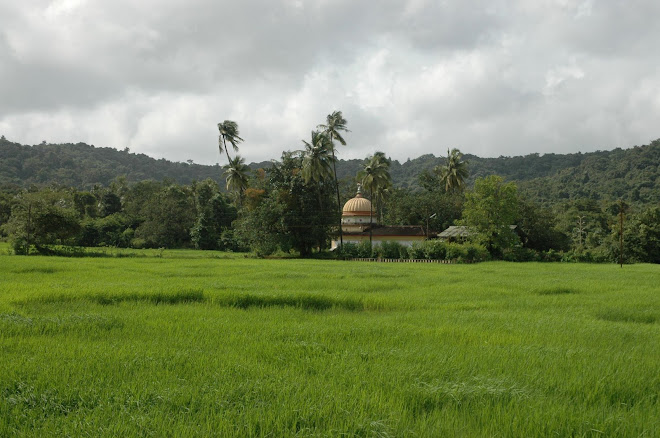

These were the days when the portuguese had landed on the sacred shores of the Konkan Kashi or Goa. They were keen to caputire the land for the King of Portugal and capture the souls for their God. Many so called saints and priests came from portuguese shores to convert the Hindus to the new faith of Christianity. To convert Hindus they had to first understand their language and their mythology and literature. It was in their interest to do so.
The Portuguese Jesuits set about writing down the literature of the Konkani Hindus. This book is a modern transliteration by Dr P Naik of the Thomas Stevens Konkani Kendra in Goa. Krishnadas Shama was a konkani saraswat brahmin from Kushasthali, saxti(Salcette), Goa who was well versed with Konkani Hindu folklore. He was proficient in Konkani, Marathi and Sanskrit and perhaps even Kannada. He gave an oration of the Mahabharat Adi Parv in Chaste Saraswat Konkani and this was written down by the Jesuits in Roman script. This happened just before the Hindu Holocaust in Goa in the middle of the 16th century.
The transliterated konkani mahabharat was filed away in the libraries in portugal when some Goans discovered them. Dr Naik, himself a jesuit priest transliterated this in the common devnagri script used by many Konkanis today and the TSKK published the same.
The preface thanks the jesuit priests who saved this piece of literature! Shouldnt they be blamed for the almost complete annhilation of the Hindu Konkani culture, temples, literature from Goa??? Wouldn't this be a living tradition if it were not for the portuguese and Jesuits iconoclasts who destroyed all the Goan temples in the province of Saxti (salcette).
There also a mention of Konkani being only an oral language before the Jesuits began to write it in the roman script . Unfortunately the then konkani literature, temples and culture was almost completely annhilated in the 1540s to 1560s to make sure that the Hindu religion never recovers and all the people were forcibly converted to catholicism.
However the mentioned book is a beautiful read for all the lovers of Konkani and makes one comprehend and lament the insurrmountable loss , the Konkani literature, culture and religion has has to suffer under the portuguese and jesuits.
Hindus and Catholics live peacefully in Goa today with a great deal of understanding. We have learnt our lessons from the past (At least we hope so).
Hindus form a majority in Goa today. Hindu temples are booming. Beautiful churches have also been built (some unfortunately on the graves of previous temples). These portuguese religious fanatics who wanted Goa to be cleansed of the Hindu faith are unfortunately not here to see that the Hindus have built a temple in Lisbon.
Do read the book.
Solavya Shekdantle Konknni Mhabharat Adi Parv
Published by the TSKK
Goa- 1990
By a kind donation of Rs 20,000 by the Kuwait Konkani Kendra.


















 Hinduism was however in the core of these neo-converts and inspite of the Inquisition to stop these practices Christians of Goan origin still practice a chrisitianity which has an abundance of Hindu customs.
Hinduism was however in the core of these neo-converts and inspite of the Inquisition to stop these practices Christians of Goan origin still practice a chrisitianity which has an abundance of Hindu customs.

